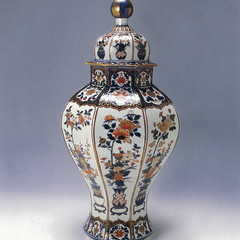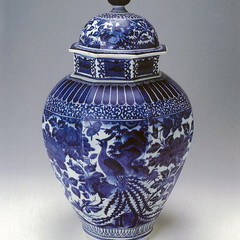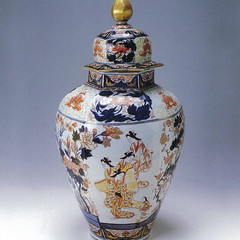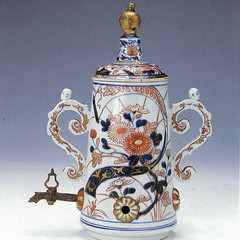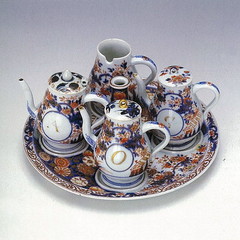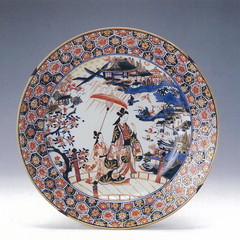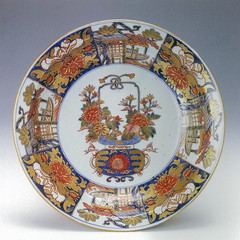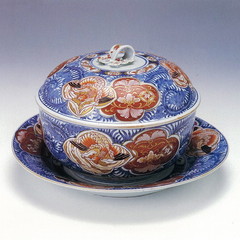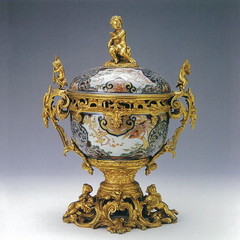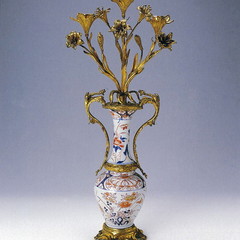Kanbara Collection
【Owned by Arita Town, exhibited at Kyushu Ceramic Museum】
The Kanbara Collection was a gift donated to the town of Arita by the late Kanbara Hakaru (1896-1987), who was born in Arita and an honorary citizen of Arita Town.
The collection consists of porcelain produced in Arita and exported to Europe about 300 years ago. Mr. Kanbara brought these pieces back to Japan, their country of origin. One section consists of Chinese and European objects which were modelled after Japanese enamelled ware. During the Edo period, Arita porcelain was shipped throughout the entire country from the Port of Imari, and thus the name of Imari was associated with these products. Such porcelain is also called “Ko-Imari” in the present day. (“Ko” means old in Japanese.) Among the various styles of exported Ko-Imari, the type of decorative porcelains featuring deep blue cobalt underglaze over which red and gold enamels are painted, a style called “Kinrande,” is most striking. Some of the pieces were mounted with gold ornamentation in Europe and used as chandeliers and lamps. The collection includes a seasoning set which has different letters marked on the porcelain indicating the contents, like “O” for oil and “A” for azijin (meaning “vinegar” in Dutch) and a dish with the VOC seal of the Dutch East India Company. This magnificent collection was deposited here by Arita Town for the opening of the Kyushu Ceramic Museum and is permanently exhibited in this room.
Short Biography of Kanbara Hakaru
| 1896 (Meiji 29) | Born as the first son of Kanbara Kenzo and his wife, Sei, who operated the ryokan (traditional Japanese inn) 'Sagaya' in Akae-machi, Arita, Saga Prefecture. |
|---|---|
| 1920 (Taisho 9) | Graduated from Nagasaki Commercial High School (present-day Nagasaki University) and joined Mitsui & Co., Ltd. Started research on the history of ceramics. |
| 1946 (Showa 21) | Resigned from Mitsui & Co., Ltd. |
| 1948 (Showa 23) | Participated in the establishment of Nishinihonbussan Co., Ltd. |
| 1964 (Showa 39) | Appointed as a member of the Council for the Protection of Cultural Properties of Arita Town. |
| 1974 (Showa 49) | Collected Ko-Imari in various parts of Europe. Envisaged the establishment of an international ceramic museum in Arita. |
| 1976 (Showa 51) | Donated his collection to Arita Town on the occasion of the establishment of the Arita History and Folklore Museum. |
| 1980 (Showa 55) | The collection was transferred to the Kyushu Ceramic Museum for its opening and displayed as a permanent exhibition. Mr. Kanbara was conferred the title of "Honorary Citizen of Arita Town." |
| 1987 (Showa 62) | Passed away on March 14 (at age 91). |

